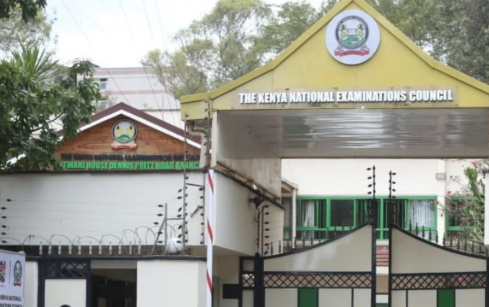How discreet design of e-cigarettes allows vaping to go unnoticed in homes

Vape kits are designed as alternatives to traditional smoking, and they come in a variety of types to suit different preferences and needs
The rising trend of e-cigarettes, or vaping, is creating serious challenges for young people around the world, including in Kenya. These devices, often marketed with enticing flavours, can easily blend into everyday life.
For instance, some e-cigarettes are cleverly designed to resemble ordinary pens. To an untrained eye, these devices might look like just another writing tool, making them hard for parents and teachers to spot.
More To Read
- 'No smoking' in Southeast Asia: A region quits tobacco
- WHO warns of alarming teen vaping surge as 15 million adolescents now using e-cigarettes
- Stakeholders petition Senate to halt tobacco control Bill
- Candy-coated killers: How tobacco industry hooks youth with flavours, false glamour
- Mother’s struggle mirrors Kenya’s youth nicotine crisis amid flavoured product surge
- WHO alarmed by tobacco industry strategies to keep young people hooked
Vaping is the act of inhaling vapour produced by an electronic device, like an e-cigarette, which heats a liquid (often containing nicotine, flavourings, and other chemicals) to create the vapour.
This subtle disguise can lead to unintentional blind spots in monitoring and understanding the vaping habits of young people. As a result, parents and educators might struggle to recognize the signs and address the issue effectively, leaving many young individuals at risk without the support they need.
Vaping has emerged as a popular alternative to traditional cigarettes, especially among teenagers.
These flavours, which range from fruity to dessert-like, often attract teenagers, including many girls, making vaping seem more like a fun, flavorful activity rather than a serious health concern.
Vape kits are designed as alternatives to traditional smoking, and they come in a variety of types to suit different preferences and needs. Here are the six main categories of vapes you might encounter, along with their variations:
Pod Vapes:
Prefilled Pods: These come with preloaded e-liquid and are ready to use right out of the box. Once the e-liquid is depleted, the entire pod is replaced.
Semi-Disposable Pods: These are similar to prefilled pods but may offer a bit more flexibility. They might allow for refilling a few times before disposal.
Refillable Pods: These pods can be filled with your choice of e-liquid, giving you more control over flavours and nicotine levels.
Starter Kits:
Beginner Kits: Designed for those new to vaping, these kits typically include everything needed to start vaping, including a device, tank, and e-liquid.
Advanced Starter Kits: These might offer more features or customization options compared to basic beginner kits but are still user-friendly.
Vape Pens:
Compact Vape Pens: Slim and portable, these are easy to carry and use. They usually come with a built-in battery and tank.
High-Power Vape Pens: Larger and more powerful, these vape pens can offer more vapour production and customizable settings.
MTL (Mouth-to-Lung) Vapes:
Standard MTL Devices: These are designed for a vaping style where the vapour is first inhaled into the mouth and then into the lungs, similar to smoking.
Adjustable MTL Devices: These allow you to adjust airflow and other settings to customize your MTL experience.
Sub-Ohm Vapes:
Standard Sub-Ohm Kits: These are designed for high vapour production and typically use low-resistance coils. They are suited for direct lung inhalation.
Advanced Sub-Ohm Kits: These offer more advanced features, such as adjustable wattage and temperature control, for experienced vapers.
Disposable Vapes:
Single-Use Disposables: Pre-filled with e-liquid and meant for one-time use, these are convenient but have limited flavour and nicotine options.
Longer-Lasting Disposables: These might offer a larger e-liquid capacity and more puffs compared to basic disposables.
In Kenya and across Africa, tobacco use among young adolescents and women is rising despite overall lower usage rates compared to other regions. This increase is driven by aggressive marketing strategies from tobacco companies targeting low- and middle-income countries. A survey by NACADA and KIPPRA shows that 6.0 per cent of primary school students and 14.5 per cent of secondary school students in Kenya have used tobacco, with cigarettes being the most common. The rise in tobacco use is linked to targeted advertising and promotions designed to attract new users and discourage quitting.
According to the World Health Organization (WHO), the main impacts of e-cigarettes include:
Health Risks: E-cigarettes emit toxic substances that can harm both users and those exposed to second-hand aerosols. Nicotine is addictive and has adverse effects on brain development in children and adolescents, as well as on fetal development during pregnancy.
Addiction and Increased Smoking: E-cigarette use is linked to increased uptake of conventional cigarettes, especially among non-smoking youth, with a reported increase of nearly three times.
Toxicity and Safety: E-cigarettes generate toxic substances, some of which are cancer-causing and others that raise the risk of heart and lung disorders. There is also a risk of physical injuries from device malfunctions or explosions.
Uncertain Long-Term Effects: The long-term health impacts of e-cigarette use and exposure are not yet fully known, but the current evidence indicates that they are harmful and not safe.
(WHO) reports that tobacco kills up to half of its users who do not quit. Each year, tobacco causes more than 8 million deaths, including approximately 1.3 million non-smokers who die from exposure to second-hand smoke.
About 80% of the 1.3 billion tobacco users worldwide reside in low- and middle-income countries.
Top Stories Today













































